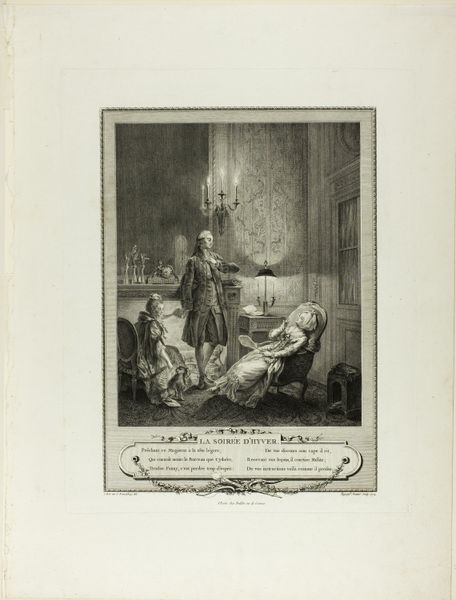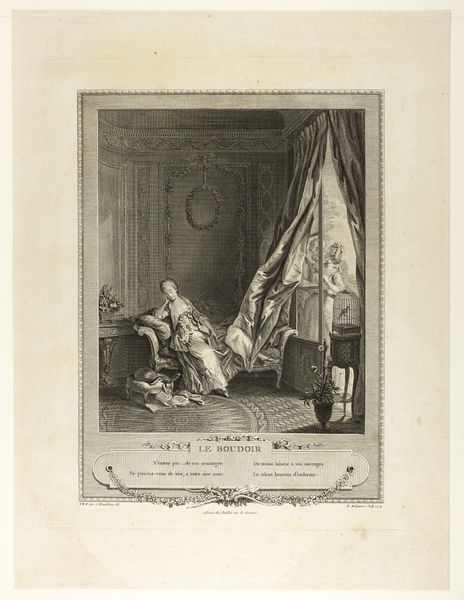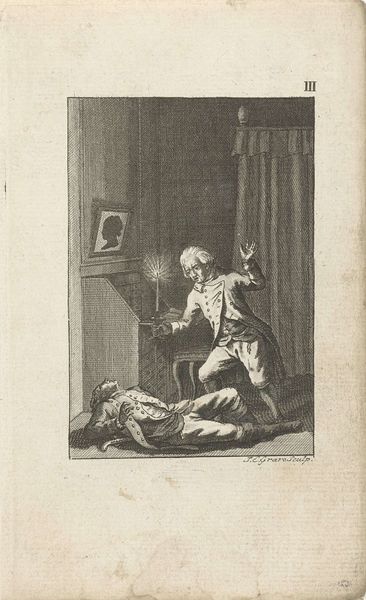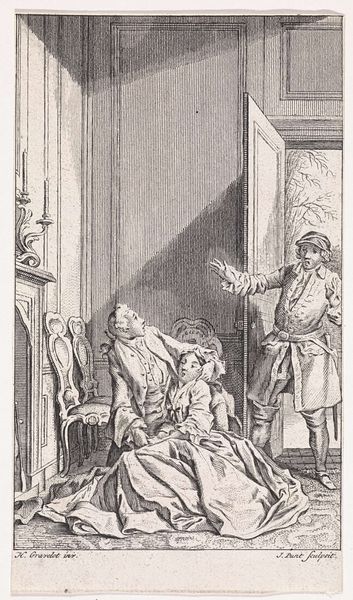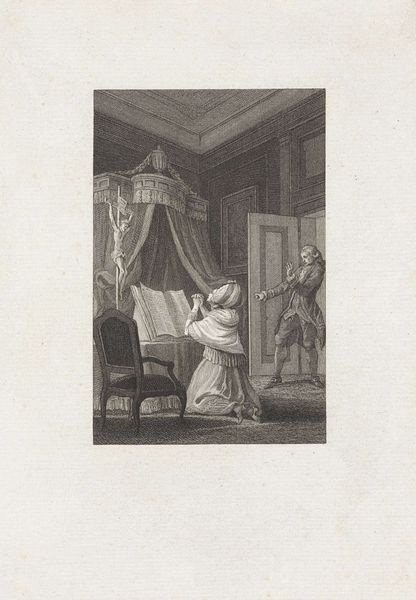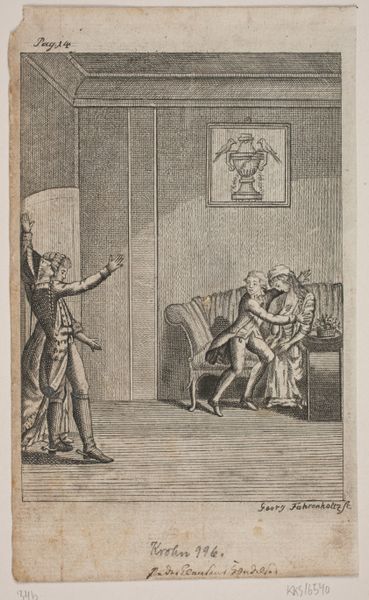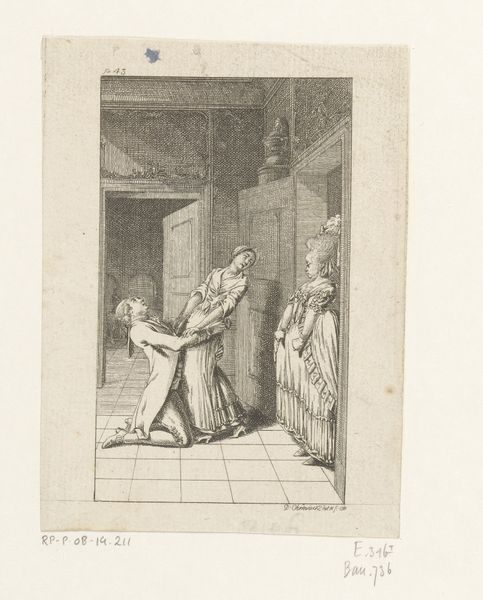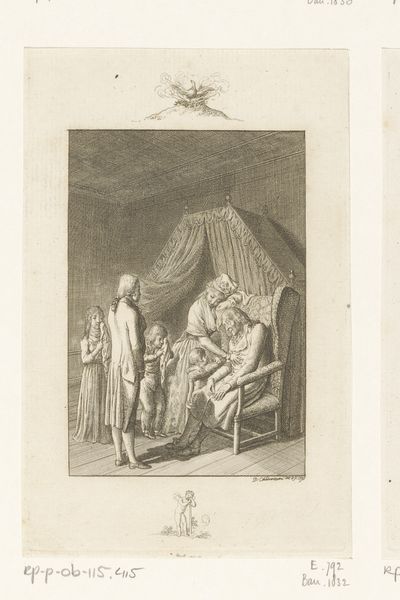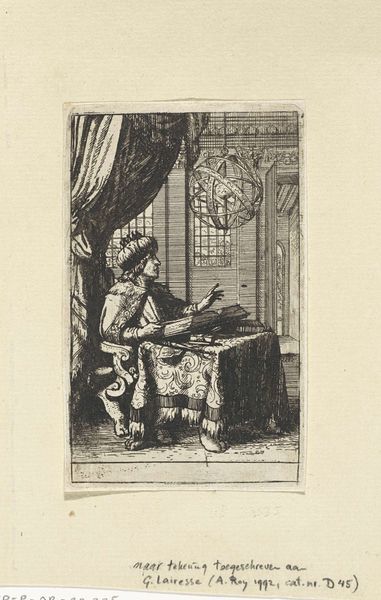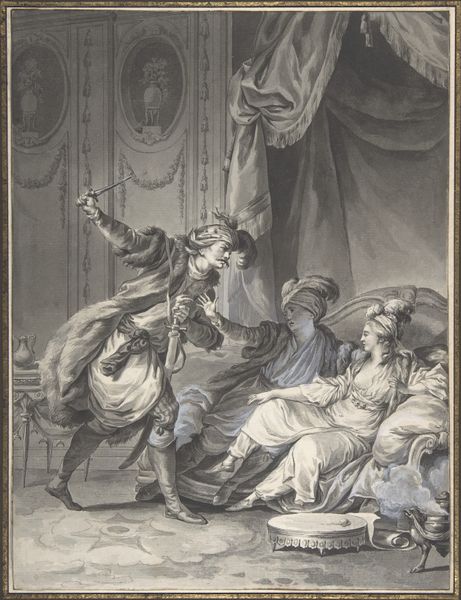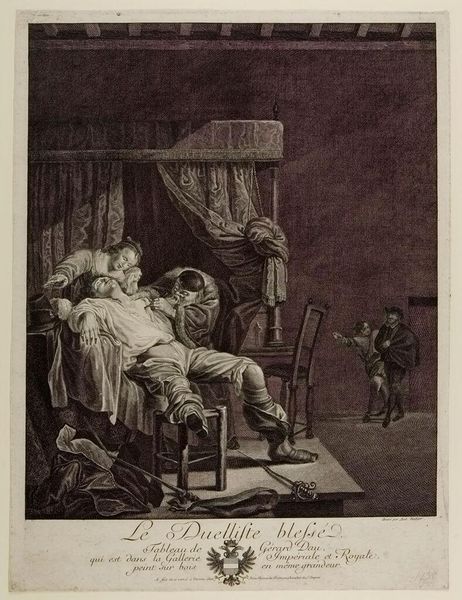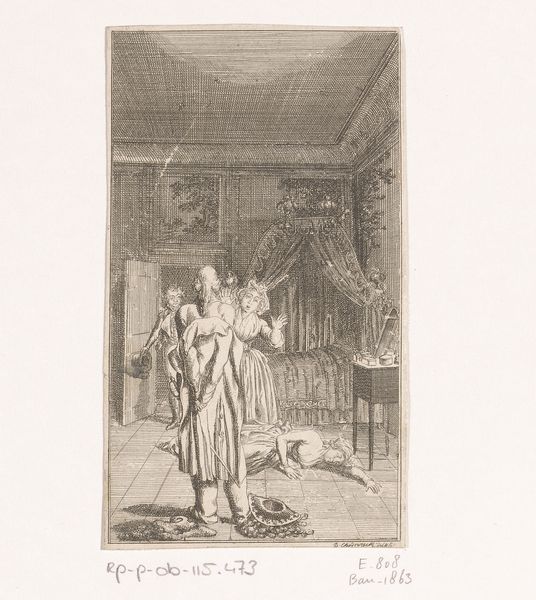
Dimensions: height 167 mm, width 121 mm
Copyright: Rijks Museum: Open Domain
Curator: So, here we have "The Couple and the Thief," an engraving by Reinier Vinkeles, dating back to 1776. It's currently housed in the Rijksmuseum. Editor: It's fascinating! I am struck by how theatrical the composition feels. The exaggerated poses and stark contrast remind me of stage lighting. How would you interpret this work purely from its visual components? Curator: The linear precision is quite remarkable, wouldn't you agree? Note how Vinkeles has used line weight and density to create areas of high and low contrast. The scene's drama isn't just from the narrative. It's rooted in the formal qualities. For example, observe the sharp angles created by the thief's posture and juxtapose it against the rounded curves of the chair and slumped figure of what appears to be the husband. Editor: Yes, the lines do guide your eye. I notice that the thief and the standing figure are more sharply delineated than the fallen figure on the floor. What does that decision convey? Curator: Precisely! Vinkeles subtly directs our attention. By emphasizing the lines and tonal values of the standing figures, he essentially elevates them to the compositional forefront, overshadowing, quite literally, the man prostrate on the floor. In a sense, the drama resides as much in these compositional choices as in the implied violence. Editor: It's interesting how the artist is manipulating our perceptions by selectively employing contrast and focus. Curator: Precisely. Vinkeles's expertise in manipulating the engraving medium allows him to emphasize certain figures and diminish others, manipulating our interpretation. Editor: So it's the how, not just the what, that conveys the meaning. Thank you! Curator: Indeed. Analyzing the intrinsic elements offers a compelling window into understanding any work.
Comments
No comments
Be the first to comment and join the conversation on the ultimate creative platform.

